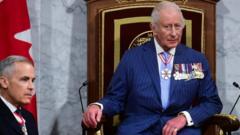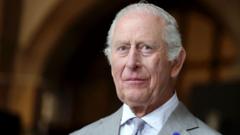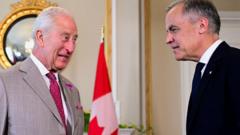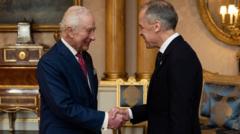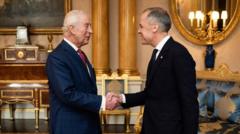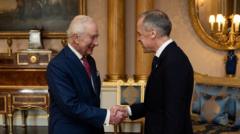The royal train, an emblem of the British monarchy for over a century and a half, has officially been retired as part of Buckingham Palace's recent cost-cutting measures. The decision, announced on July 1, 2025, represents the conclusion of an illustrious tradition that began with Queen Victoria, the first monarch to travel by rail in the 19th century.
Initially skeptical of the steam engine's promise, Queen Victoria ultimately embraced train travel, describing it as “delightful” in her journal. The historical significance of the royal train spanned notable journeys—official engagements, royal weddings, and personal trips—showcasing the luxurious railcars initially commissioned by Victoria in 1869.
The earlier royal trains, adorned with extravagant decorations such as 23-karat gold, served the monarchs until the dawn of the 20th century. Despite its grandeur, some royal family members, like Victoria, had peculiar personal customs, refusing to dine on board due to health beliefs, showcasing a blend of tradition and idiosyncrasy.
While the retirement of the royal train may contribute to a more streamlined royal budget, it signifies the end of a unique travel experience deeply woven into the fabric of British monarchy. Now, as King Charles III and his lineage adapt to changing times, the legacy of the royal train may soon become simply a cherished memory of a bygone era.
Initially skeptical of the steam engine's promise, Queen Victoria ultimately embraced train travel, describing it as “delightful” in her journal. The historical significance of the royal train spanned notable journeys—official engagements, royal weddings, and personal trips—showcasing the luxurious railcars initially commissioned by Victoria in 1869.
The earlier royal trains, adorned with extravagant decorations such as 23-karat gold, served the monarchs until the dawn of the 20th century. Despite its grandeur, some royal family members, like Victoria, had peculiar personal customs, refusing to dine on board due to health beliefs, showcasing a blend of tradition and idiosyncrasy.
While the retirement of the royal train may contribute to a more streamlined royal budget, it signifies the end of a unique travel experience deeply woven into the fabric of British monarchy. Now, as King Charles III and his lineage adapt to changing times, the legacy of the royal train may soon become simply a cherished memory of a bygone era.












